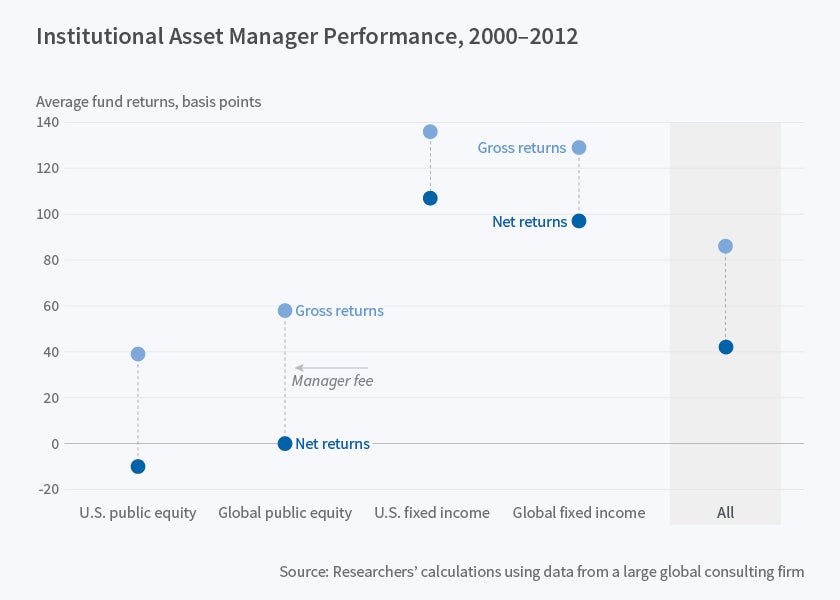Active Asset Managers Earn their Keep, But...
...the edge they have enjoyed in offering profitable strategies may be eroding with the emergence of low-cost exchange-traded funds.
Asset managers who actively manage large institutional investments outperformed benchmarks by 42 basis points after expenses, according to Asset Managers: Institutional Performance and Smart Betas (NBER Working Paper 22982). Researchers Joseph Gerakos, Juhani T. Linnainmaa, and Adair Morse estimate that they achieved this through "smart beta" strategies, which weight portfolios to track various factors and indices that have historically earned abnormal returns.
But the study also suggests that asset managers' advantage in offering these profitable smart beta strategies may be eroding because of the emergence of low-cost exchange-traded funds (ETFs), which can be used to replicate smart beta weightings with simple optimization calculations.
The researchers analyze data covering about $18 trillion in annual investments in institutional pooled funds from 2000 to 2012. They find that institutions paid outside asset managers $162 billion annually to handle their portfolios, or about 44 basis points (0.44 percentage points). These outside managers more than made up for their fees with average excess returns, relative to their benchmarks, of 86 basis points. Thus the net-of-fees return was 42 basis points. The researchers estimate net-of-fee returns that are higher than those in many previous studies of institutions' returns. They argue that this is because most other studies include portfolios that institutions manage in-house and typically look only at U.S. stocks, not foreign stocks or fixed-income investments. Their findings suggest that delegated investments, those managed by external managers, outperform those managed in-house at large institutions.
The researchers examine the source of the returns to active management, and conclude that so-called "smart beta" portfolios are what help active asset managers outperform traditional benchmarks. They demonstrate this by constructing portfolios that mimic smart beta portfolios, and find that their performance closely tracks the estimated performance of the managers' funds. While this implies that the active portfolio weightings associated with smart beta strategies have outperformed the traditionally weighted bench-mark portfolios, they also conclude that "the introduction of liquid, low-cost factor ETFs is likely eroding the comparative advantage of asset manager funds."
The researchers estimate that over their sample period, institutional asset managers earned an annual gross excess return (alpha) of 131 basis points relative to the overall equity market. This outperformance exceeds the 86 basis points of excess return relative to benchmarks, mentioned earlier, because some benchmarks also had higher returns than the market. Multiplying this excess return by assets under management suggests that, on average, institutional asset managers earned $469 billion from other market participants each year. Of this amount, $307 billion was earned by the institutions hiring the managers, and $162 billion remained with the asset managers as fees. Because the average return across all investors must be the market return, the favorable performance of institutional asset managers must imply underperformance for other investors. The researchers conclude that "the average non-institutional or non-intermediated dollar—that is, investments made through retail mutual funds or directly by individuals or institutions—underperformed the market by 53 basis points even before fees."
—Laurent Belsie



